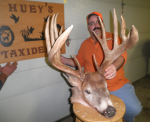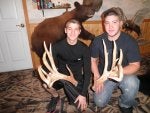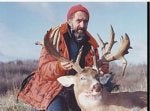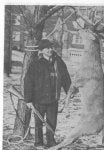Exactly.
Statistical research on the record books has shown that B&C class bucks tend to come more frequently in a developing/expanding deer herd.
From the turn of the 20th century through the early 1900's, almost every stem of the aboriginal forest in Pa had been cut, coupled with the fact that subsistence and market hunting had just about wiped out the deer herd. Throughout the 20's and 30's, the old growth Hemlock/Pine forest gave way to hardwood regeneration and game laws protected the herd, creating perfect conditions for deer to thrive. There were far less people, period, in those days and so there were fewer people hunting. Then, along comes WWII, and there was very little hunting for a few years. All of those factors allowed bucks to eat well and get some age on them. The late 40's through the late 50's were banner years for big bucks in northern Pa. By the 70's, the hardwood forest had matured, and combined with the over protection of does and increased pressure on bucks , that habitat and herd was degraded.
Same situation from the late 60's through the mid 80's in southern Pa. Up until the late 60's, there were very few deer in that region. Then the beginnings of urban sprawl began to create a lot of reverting farm land, perfect deer habitat. Most hunters traveled north to the big woods in those days and there wasn't much pressure on the southern herd. So, once more, you had well fed bucks getting some age on them, and record bucks were being taken. Now, clean farming and ever expanding suburbs are putting an end to the banner days in the southern tier.











